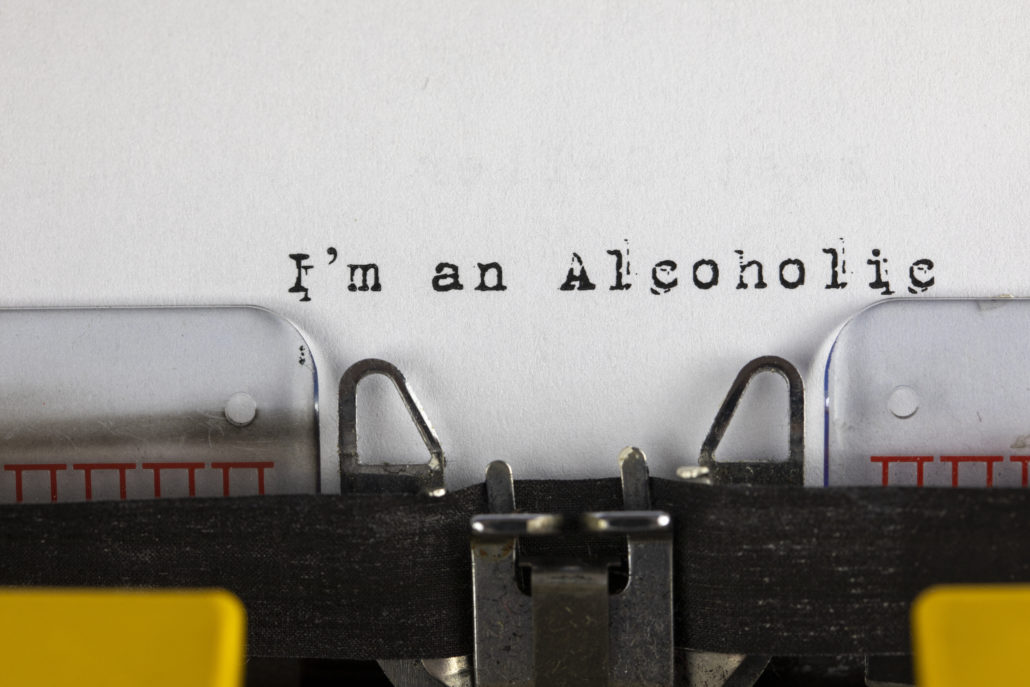What Is Tramadol?
Tramadol is used to relieve moderate to moderately severe pain. Tramadol extended-release tablets and capsules are only used by people who are expected to need medication to relieve pain around the clock. Is Tramadol a narcotic? Tramadol is in a class of medications called opiate (narcotic) analgesics. It works by changing the way the brain and nervous system respond to pain.
Tramadol may be habit-forming or may cause drug addiction, especially with prolonged use. Do not take more of it, take it more often, or take it in a different way than directed by your doctor. While taking tramadol, discuss with your health care provider your pain treatment goals, length of treatment, and other ways to manage your pain. Tell your doctor if you or anyone in your family:
- Drinks or has ever drunk large amounts of alcohol
- Uses or has ever used street drugs
- Has overused prescription medications
- Has had a drug overdose
- If you have or have ever had depression or another mental illness
Is Tramadol a narcotic? Yes, it is, and there is a greater risk that you will overuse tramadol if you have or have ever had any of the conditions listed above. Talk to your health care provider immediately and ask for guidance if you think that you have an opioid addiction.

Is Tramadol An Opioid?
Tramadol belongs to a class of drugs known as opioid analgesics. It works in the brain to change how your body feels and responds to pain.
Is Tramadol A Narcotic?
Tramadol is a specific type of narcotic medicine called an opioid that is approved to treat moderate to moderately severe pain in adults. It is available under the brand names Ultram, Ultram ER, Conzip, and also as generics. [1]
Tramadol Dosage
Tramadol comes as a tablet, a solution (liquid), an extended-release (long-acting) tablet, and an extended-release (long-acting) capsule to take by mouth. The regular tablet and solution are taken usually with or without food every 4 to 6 hours as needed. The extended-release tablet and extended-release capsule should be taken once a day. Take the extended-release tablet and the extended-release capsule at about the same time of day every day.
If you are taking the extended-release capsule, you may take it with or without food. If you are taking the extended-release tablet, you should either always take it with food or always take it without food. Take tramadol exactly as directed. Do not take more medication as a single dose or take more doses per day than prescribed by your doctor. Is Tramadol a narcotic? Yes, it is. Taking more narcotic tramadol medicines than prescribed by your doctor or in a way that is not recommended may cause serious side effects or death.
Side Effects Of Tramadol
Tramadol may cause side effects. Tell your doctor if any of these symptoms are severe or do not go away:
- Sleepiness
- Headache
- Nervousness
- Uncontrollable shaking of a part of the body
- Muscle tightness
- Changes in mood
- Heartburn or indigestion
- Dry mouth
Is Tramadol a narcotic? Yes, it is, and some tramadol side effects can be serious. If you experience any of these symptoms or those mentioned in the IMPORTANT WARNING section, call your doctor immediately or get emergency medical treatment:
- Hives
- Rash
- Blisters
- Hoarseness
- Difficulty swallowing or breathing
- Swelling of the eyes, face, throat, tongue, lips, hands, feet, ankles, or lower legs
- Agitation, hallucinations (seeing things or hearing voices that do not exist), fever, sweating, confusion, fast heartbeat, shivering, severe muscle stiffness or twitching, loss of coordination, nausea, vomiting, or diarrhea
- Nausea, vomiting, loss of appetite, weakness, or dizziness
- Changes in heartbeat
- Nausea, vomiting, headache, confusion, loss of energy, drowsiness, fatigue, restlessness, irritability, muscle weakness, spasms or cramps
- Hunger, headache, sweating, shaking of a part of your body that you cannot control, irritability, or difficulty concentrating
- Loss of consciousness
- Seizures
Tramadol may cause other side effects. Tell your doctor if you have any unusual problems while you are taking this medication.
Tramadol Abuse
While taking tramadol, you should talk to your doctor about having a rescue medication called naloxone readily available (e.g., home, office). Naloxone is used to reverse the life-threatening effects of an opioid overdose. It works by blocking the effects of opiates to relieve dangerous symptoms caused by high levels of opiates in the blood. Your doctor may also prescribe you naloxone if you are living in a household where there are small children or someone who has abused street or prescription drugs.

You should make sure that you and your family members, caregivers, or the people who spend time with you know how to recognize an overdose, how to use naloxone, and what to do until emergency medical help arrives. Your doctor or pharmacist will show you and your family members how to use the medication.
Ask your pharmacist for the instructions or visit the manufacturer’s website to get the instructions. If symptoms of an overdose occur, a friend or family member should give the first dose of naloxone, call 911 immediately, and stay with you and watch you closely until emergency medical help arrives.
Your symptoms may return within a few minutes after you receive naloxone. If your symptoms return, the person should give you another dose of naloxone. Additional doses may be given every 2 to 3 minutes if symptoms return before medical help arrives. [2]
Is Tramadol a narcotic? Yes, it is a narcotic that may cause drug overdose as well. Symptoms of overdose may include the following:
- Decreased size of the pupil (the black circle in the center of the eye)
- Difficulty breathing
- Slow or shallowing breathing
- Extreme drowsiness or sleepiness
- Unable to respond or wake up
- Slowed heartbeat
- Muscle weakness
- Cold, clammy skin
Withdrawal Symptoms
During tramadol withdrawal, you can expect to feel flu-ish and sick to your stomach. You may sweat and have the chills. You might have trouble sleeping and feel much more irritated and aggravated than usual. You might also experience varying degrees of anxiety and depression.
Is Tramadol a narcotic? Yes, it is a narcotic that can cause withdrawal as well. Tramadol withdrawal symptoms typically begin within one or two days of your last dose and usually resolve in about a week. When withdrawing from tramadol, you may experience any of the following symptoms:
- Sweating
- Chills
- Irritability
- Anxiety
- Diarrhea
- Nausea or vomiting
- Loss of appetite
- Panic, paranoia, or panic attacks
- Aches and pains in the muscles or joints
- Trouble falling or staying asleep
- Runny nose, sneezing, or coughing
- Gooseflesh
- Abdominal cramps
- Restless leg syndrome
- Confusion or delirium
- Agitation
- Increased blood pressure or heart rate
- Fast breathing
Is Tramadol a narcotic? Yes, it is a narcotic and in the class of opioids. But, everyone’s opioid withdrawal experience is different. It is impossible to predict exactly when your symptoms will start, how long they will last, or how severe they will be. Things that can influence your withdrawal experience include the duration of your drug use, how much you use, and how often you use. Other factors that can influence your withdrawal include:
- Your health
- Your age
- Genetics
- Your mental health
- Your other drug use
- Your history with substance abuse
With the increase in tramadol usage for the relief of chronic pain, tramadol abuse and dependency are increased. Some tramadol withdrawal symptoms are not related to opioids, for example when the effectiveness is not only on opioid receptors but on catecholamine and serotonin receptors. So, together with typical symptoms of withdrawal, atypical symptoms had been reported. Psychosis is one of tramadol atypical withdrawal symptoms that subsided a few days after the suppression of withdrawal symptoms. In such cases, the diagnosis is substance withdrawal instead of psychotic disorder due to substance withdrawal, and treatment is based on this diagnosis. [3]
Find Rehab For Tramadol Abuse
There are a variety of evidence-based approaches to treating tramadol and opioid addiction. Drug abuse treatment can incorporate behavioral therapy (cognitive-behavioral therapy or contingency management), medications, or a combination. The specific treatment or combination of treatments will range depending on the client’s individual needs and, often, on the types of drugs they use.
Many treatment programs exercise both individual and group therapies. For instance, group therapy can provide social reinforcement and help enforce behavioral contingencies that promote abstinence and a non-drug-using lifestyle.
How We Can Help? Searched for “Texas inpatient consultants or inpatient drug rehab Texas?” or are you seeking a national inpatient rehab destination?
What is the common cause of drug abuse and is it treatable? Drug addiction is a complex issue that requires long-term treatment – not a quick fix. Therefore, the first step in drug abuse treatment is to seek help from your medical provider or a trained professional. Clearing addictive drugs from the body and overcoming withdrawal symptoms is the goal of detox, which is the first step of drug abuse treatment.
If you are addicted to drugs such as tramadol, your first step in recovery should be medical opioid detox in a safe and medically supervised setting. We Level Up TX detox & substance abuse treatment center medically assist clients in clearing their systems of addictive substances. In addition, a comprehensive team prescribing medications can alleviate your withdrawal pains while monitoring your health 24 hours. Thus, assuring both your safety and comfort.
Drug And Alcohol Treatment Centers In Houston TX
We Level Up TX’s thorough approach to rehabilitation supports several levels of care to ensure the best possible outcome for every client who enters our doors. From an intensive and more supportive atmosphere for those in the early days of recovery to a comfortable residential-style living dynamic upon completion of detox, we are here to help guide you down the safe and results-based path to your sobriety. Once detox is complete, a new doorway in treatment opens up, referred to as a residential level of care to help the clients uncover the cause of drug abuse and receive therapies.
We Level Up TX residential care program slowly and effectively introduces the individual into an atmosphere of therapeutic growth, marked by Master’s level therapists, clinicians, group counselors, psychiatrists, and a community of like-minded individuals with the same aim: to attain sobriety and live a great life.

Clients in residential therapy programs will live comfortably within the facility during this crucial and fragile time. This supportive environment is designed to give clients 24-hour care for sobriety, removing temptations for relapse and applying an air of recovery into every component of the treatment timeline.
We Level Up TX finds that when clients are living in a supportive community, especially during their early recovery process, they can truly focus on what matters most: their recovery. Make this your opportunity to reclaim your life with a comfortable drug addiction treatment. Call today to speak with one of our treatment specialists if you have any addictive drug-related questions such as “Is tramadol a narcotic?”
Sources:
[1] Tramadol Information – https://www.fda.gov/drugs/postmarket-drug-safety-information-patients-and-providers/tramadol-information#:~:text=Tramadol%20is%20a%20specific%20type,Conzip%2C%20and%20also%20as%20generics.
[2] Tramadol – U.S. Department of Health and Human Services National Institutes of Health
[3] Psychosis following Tramadol Withdrawal – National Center for Biotechnology Information




